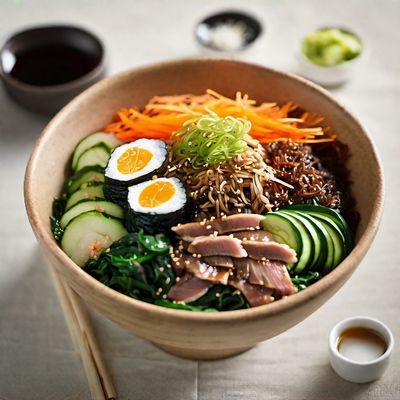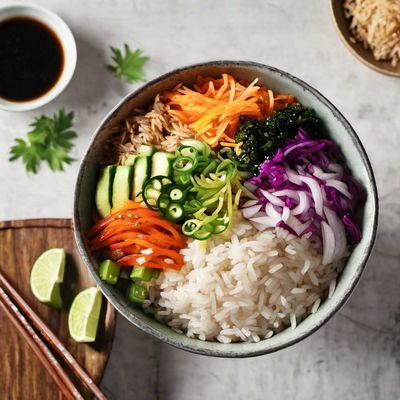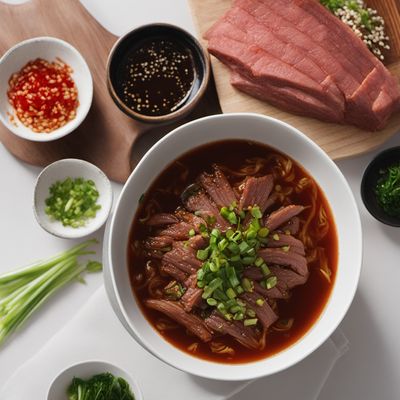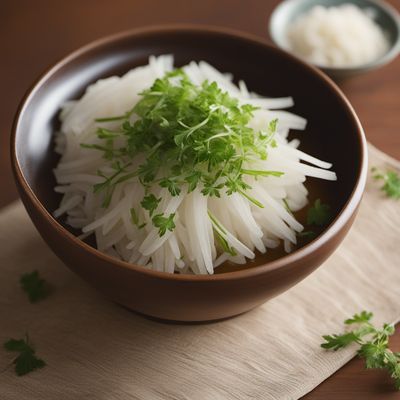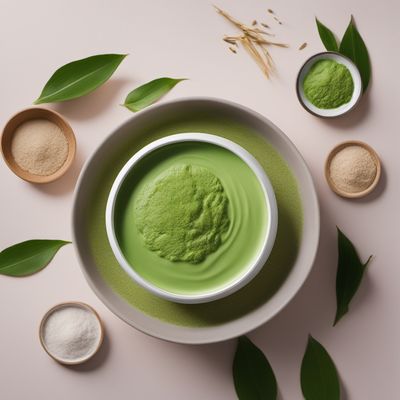
Recipe
Japanese-style Bibimbap
Harmony Bowl: A Japanese Twist on Bibimbap
4.7 out of 5
In the context of Japanese cuisine, this Japanese-style Bibimbap is a delightful fusion of flavors and textures. Inspired by the Korean classic, this dish combines fresh Japanese ingredients with the vibrant colors and umami-rich flavors that Bibimbap is known for. Get ready to experience a harmonious blend of Japanese and Korean culinary traditions in every bite.
Metadata
Preparation time
30 minutes
Cooking time
10 minutes
Total time
40 minutes
Yields
4 servings
Preparation difficulty
Medium
Suitable for
Pescatarian, Gluten-free, Dairy-free, Nut-free, Low calorie
Allergens
Fish, Shellfish, Soy
Not suitable for
Vegan, Vegetarian, Paleo, Keto, High protein
Ingredients
While the original Korean Bibimbap features a variety of vegetables, meat, and a spicy gochujang sauce, this Japanese adaptation incorporates Japanese ingredients and flavors. The Japanese-style Bibimbap highlights the use of fresh seafood, pickled vegetables, and a savory soy-based sauce, giving it a distinct Japanese twist. We alse have the original recipe for Bibimbap, so you can check it out.
-
2 cups (470ml) sushi rice 2 cups (470ml) sushi rice
-
1 tablespoon vegetable oil 1 tablespoon vegetable oil
-
200g (7oz) fresh salmon, sliced 200g (7oz) fresh salmon, sliced
-
200g (7oz) fresh tuna, sliced 200g (7oz) fresh tuna, sliced
-
100g (3.5oz) cooked shrimp 100g (3.5oz) cooked shrimp
-
1 cup (150g) julienned cucumber 1 cup (150g) julienned cucumber
-
1 cup (150g) julienned carrots 1 cup (150g) julienned carrots
-
1 cup (150g) julienned daikon radish 1 cup (150g) julienned daikon radish
-
1 cup (150g) bean sprouts 1 cup (150g) bean sprouts
-
4 sheets nori (seaweed), cut into thin strips 4 sheets nori (seaweed), cut into thin strips
-
4 tablespoons pickled ginger 4 tablespoons pickled ginger
-
4 tablespoons soy sauce 4 tablespoons soy sauce
-
2 tablespoons sesame oil 2 tablespoons sesame oil
-
2 tablespoons rice vinegar 2 tablespoons rice vinegar
-
1 tablespoon toasted sesame seeds 1 tablespoon toasted sesame seeds
-
Salt, to taste Salt, to taste
Nutrition
- Calories (kcal / KJ): 450 kcal / 1884 KJ
- Fat (total, saturated): 12g, 2g
- Carbohydrates (total, sugars): 60g, 5g
- Protein: 25g
- Fiber: 5g
- Salt: 2g
Preparation
-
1.Cook the sushi rice according to package instructions.
-
2.Heat the vegetable oil in a pan over medium heat. Sear the salmon and tuna slices for 1-2 minutes on each side. Remove from heat and set aside.
-
3.In a separate pan, blanch the bean sprouts for 1 minute. Drain and set aside.
-
4.In a small bowl, mix together the soy sauce, sesame oil, rice vinegar, and toasted sesame seeds to make the sauce.
-
5.Divide the cooked sushi rice among four bowls.
-
6.Arrange the cooked seafood, julienned vegetables, bean sprouts, pickled ginger, and nori strips on top of the rice.
-
7.Drizzle the sauce over the ingredients in each bowl.
-
8.Serve the Japanese-style Bibimbap immediately, allowing each person to mix the ingredients together before eating.
Treat your ingredients with care...
- Salmon — Ensure the salmon is fresh and of high quality for the best flavor and texture.
- Tuna — Use sushi-grade tuna for raw consumption.
- Nori (seaweed) — Toast the nori sheets lightly before cutting them into strips for added crispiness.
- Pickled ginger — Use store-bought pickled ginger or make your own by marinating thinly sliced ginger in rice vinegar and a pinch of sugar for a few hours.
Tips & Tricks
- Feel free to customize the Japanese-style Bibimbap with your favorite seafood or vegetables.
- For a vegetarian version, substitute the seafood with tofu or tempeh.
- Adjust the spiciness by adding a touch of Japanese chili powder or shichimi togarashi.
- Experiment with different Japanese pickles for added variety and flavor.
- Serve the Japanese-style Bibimbap with a side of miso soup for a complete Japanese meal experience.
Serving advice
Serve the Japanese-style Bibimbap in individual bowls, allowing each person to mix the ingredients together before eating. This dish is best enjoyed fresh and hot.
Presentation advice
To enhance the presentation, arrange the ingredients in a visually appealing manner on top of the rice. Garnish with additional toasted sesame seeds and nori strips for an extra touch of elegance.
More recipes...
For Bibimbap » Browse all
For Korean cuisine » Browse all
More Korean cuisine dishes » Browse all
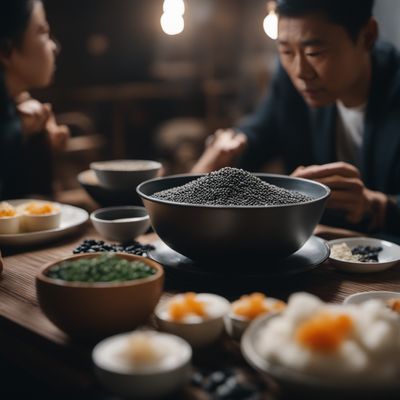
Heukimjajuk
Black Sesame Porridge
Heukimjajuk is a Korean black sesame porridge that is often served as a dessert. It is a sweet and creamy dish that is made by grinding black...

Ttongppang
Ttongppang is a popular Korean street food that is made with a sweet, crispy shell and a filling of red bean paste. It is a delicious and...
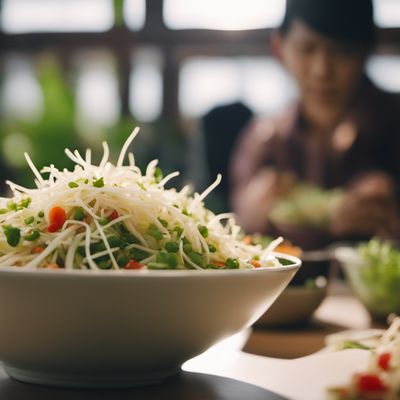
Sukjunamul
Bean Sprouts Salad
Sukjunamul is a traditional Korean dish that is made with mung bean sprouts. It is a refreshing and crunchy side dish that is perfect for a summer day.
More Japanese cuisine dishes » Browse all

Nabeyaki udon
Udon Noodle Soup in a Pot
Nabeyaki udon is a type of Japanese noodle soup that is served in a hot pot. The dish is typically made with thick udon noodles, chicken or...

Dango-jiru
Dango-Jiru
Dango-jiru is a traditional Japanese soup made with dumplings and vegetables. It is a hearty and comforting dish that is perfect for cold weather.
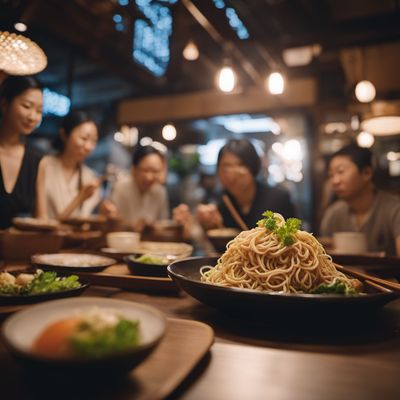
Hadaka soba
Hadaka Soba
Hadaka soba is a Japanese dish that translates to "naked soba" in English. It is a simple and healthy dish that consists of cold soba noodles...
